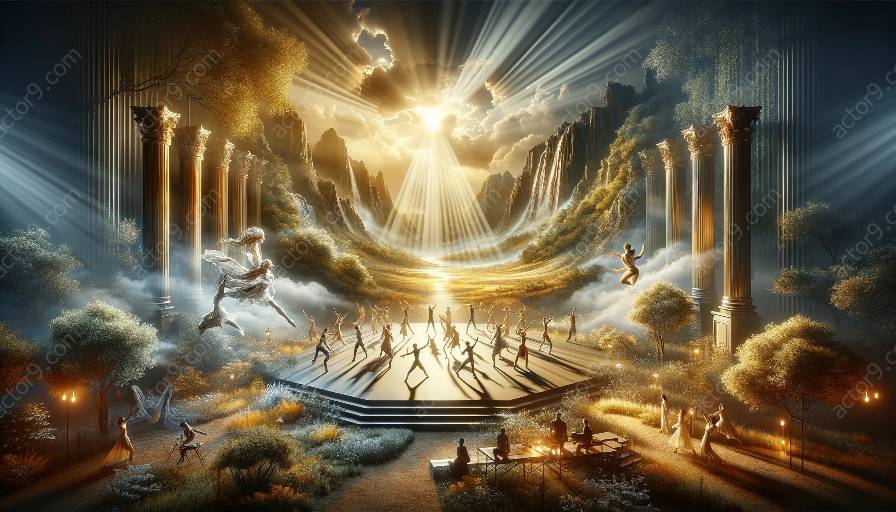In physical theatre, the use of unconventional lighting techniques carries significant cultural and social implications. The role of lighting in physical theatre is multifaceted, impacting the performers, audience, and society at large.
The Role of Lighting in Physical Theatre
Before delving into the cultural and social implications of unconventional lighting techniques, it's essential to understand the role of lighting in physical theatre. Lighting serves as a crucial element in enhancing the dramatic and emotional impact of physical performances. It can set the mood, create atmosphere, and highlight specific movements or actions, thus contributing to the overall storytelling process and complementing the narrative.
Impact on Performers
Unconventional lighting techniques in physical theatre productions have a profound effect on performers. The manipulation of light can amplify the physicality of their movements and expressions, adding depth and nuance to their performances. For instance, a sudden shift in lighting can accentuate specific gestures, intensify emotions, or obscure and reveal elements of the stage, thus influencing the performers' engagement with the audience and their own creative expression.
Engaging the Audience
Lighting significantly influences how the audience perceives and engages with a physical theatre production. Unconventional lighting techniques can create immersive and transformative experiences, drawing viewers into the world of the performance and shaping their emotional responses. Through strategic use of light and shadow, physical theatre productions can captivate and challenge the audience's perception, stimulating thought and fostering a deeper connection to the themes and messages conveyed on stage.
Societal Impact
By employing unconventional lighting techniques, physical theatre productions can address social and cultural issues in a thought-provoking manner. Lighting can be used to reflect societal constructs, challenge norms, and provoke introspection. For instance, unconventional lighting may serve as a metaphor for societal constraints or freedoms, shedding light on pertinent social issues and encouraging dialogue and reflection among audience members.
Cultural Significance
The use of unconventional lighting techniques in physical theatre productions also holds cultural significance. It provides an avenue for exploring diverse cultural narratives and traditions, showcasing unique visual aesthetics, and challenging conventional norms of performance and storytelling. Through the creative manipulation of light, physical theatre can celebrate cultural diversity and blur boundaries, fostering inclusivity and understanding.
Community Engagement
Unconventional lighting techniques can enhance community engagement with physical theatre. By incorporating varied lighting methods, productions can resonate with diverse audience demographics, offering an inclusive and accessible experience. This inclusivity can contribute to the cultural enrichment of communities, fostering a sense of shared experience and appreciation for the art form as a catalyst for social cohesion.
Artistic Innovation
Embracing unconventional lighting techniques in physical theatre productions encourages artistic innovation and experimentation. It challenges traditional approaches to lighting design, opening up opportunities for creative collaboration and pushing the boundaries of visual storytelling. This artistic exploration contributes to the evolution of cultural and social norms within the realm of theatrical expression.
Conclusion
The cultural and social implications of using unconventional lighting techniques in physical theatre productions are profound and far-reaching. From impacting performers and audiences to addressing societal issues and fostering cultural enrichment, the role of lighting in physical theatre extends beyond mere illumination, elevating the art form and its relevance in society. Embracing unconventional lighting techniques enriches the cultural landscape and shapes social discourse, underscoring the transformative power of light in physical theatrical experiences.




































